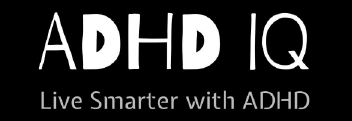[fusion_builder_container admin_label=”Row 1″ type=”flex” hundred_percent=”no” hundred_percent_height=”no” hundred_percent_height_scroll=”no” align_content=”stretch” flex_align_items=”flex-start” flex_justify_content=”center” hundred_percent_height_center_content=”yes” equal_height_columns=”no” container_tag=”div” hide_on_mobile=”small-visibility,medium-visibility,large-visibility” status=”published” padding_top_medium=”72px” padding_bottom_medium=”94px” padding_top_small=”24px” padding_bottom_small=”32px” link_hover_color=”#15d16c” border_style=”solid” box_shadow=”no” box_shadow_blur=”0″ box_shadow_spread=”0″ gradient_start_position=”0″ gradient_end_position=”100″ gradient_type=”linear” radial_direction=”center center” linear_angle=”180″ background_position=”center center” background_repeat=”no-repeat” fade=”no” background_parallax=”none” enable_mobile=”no” parallax_speed=”0.3″ background_blend_mode=”none” video_aspect_ratio=”16:9″ video_loop=”yes” video_mute=”yes” absolute=”off” absolute_devices=”small,medium,large” sticky=”off” sticky_devices=”small-visibility,medium-visibility,large-visibility” sticky_transition_offset=”0″ scroll_offset=”0″ animation_direction=”left” animation_speed=”0.3″ filter_hue=”0″ filter_saturation=”100″ filter_brightness=”100″ filter_contrast=”100″ filter_invert=”0″ filter_sepia=”0″ filter_opacity=”100″ filter_blur=”0″ filter_hue_hover=”0″ filter_saturation_hover=”100″ filter_brightness_hover=”100″ filter_contrast_hover=”100″ filter_invert_hover=”0″ filter_sepia_hover=”0″ filter_opacity_hover=”100″ filter_blur_hover=”0″ padding_top=”30px” padding_bottom=”30px”][fusion_builder_row][fusion_builder_column type=”90″ layout=”90″ align_self=”auto” content_layout=”column” align_content=”flex-start” valign_content=”flex-start” content_wrap=”wrap” spacing=”” center_content=”no” link=”” target=”_self” min_height=”” hide_on_mobile=”small-visibility,medium-visibility,large-visibility” sticky_display=”normal,sticky” class=”” id=”” background_image_id=”” type_medium=”” type_small=”” order_medium=”0″ order_small=”0″ spacing_left_medium=”10px” spacing_right_medium=”10px” spacing_left_small=”” spacing_right_small=”” spacing_left=”20px” spacing_right=”20px” margin_top_medium=”” margin_bottom_medium=”” margin_top_small=”” margin_bottom_small=”32px” margin_top=”” margin_bottom=”” padding_top_medium=”” padding_right_medium=”” padding_bottom_medium=”” padding_left_medium=”” padding_top_small=”” padding_right_small=”” padding_bottom_small=”” padding_left_small=”” padding_top=”” padding_right=”” padding_bottom=”” padding_left=”” hover_type=”none” border_sizes_top=”” border_sizes_right=”” border_sizes_bottom=”” border_sizes_left=”” border_color=”rgba(0,0,0,0.05)” border_style=”solid” border_radius_top_left=”8px” border_radius_top_right=”8px” border_radius_bottom_right=”8px” border_radius_bottom_left=”8px” box_shadow=”no” box_shadow_vertical=”2px” box_shadow_horizontal=”0px” box_shadow_blur=”4″ box_shadow_spread=”-1″ box_shadow_color=”rgba(0,0,0,0.05)” box_shadow_style=”” background_type=”single” gradient_start_color=”” gradient_end_color=”” gradient_start_position=”0″ gradient_end_position=”100″ gradient_type=”linear” radial_direction=”center center” linear_angle=”180″ background_color=”” background_image=”” background_position=”left top” background_repeat=”no-repeat” background_blend_mode=”none” render_logics=”” filter_type=”regular” filter_hue=”0″ filter_saturation=”100″ filter_brightness=”100″ filter_contrast=”100″ filter_invert=”0″ filter_sepia=”0″ filter_opacity=”100″ filter_blur=”0″ filter_hue_hover=”0″ filter_saturation_hover=”100″ filter_brightness_hover=”100″ filter_contrast_hover=”100″ filter_invert_hover=”0″ filter_sepia_hover=”0″ filter_opacity_hover=”100″ filter_blur_hover=”0″ animation_type=”” animation_direction=”down” animation_speed=”1.0″ animation_offset=”” last=”true” border_position=”all” first=”true”][fusion_text columns=”” column_min_width=”” column_spacing=”” rule_style=”default” rule_size=”” rule_color=”” content_alignment_medium=”” content_alignment_small=”” content_alignment=”” hide_on_mobile=”small-visibility,medium-visibility,large-visibility” sticky_display=”normal,sticky” class=”” id=”” margin_top=”” margin_right=”” margin_bottom=”” margin_left=”” font_size=”” fusion_font_family_text_font=”” fusion_font_variant_text_font=”” line_height=”” letter_spacing=”” text_color=”” animation_type=”” animation_direction=”left” animation_speed=”0.3″ animation_offset=””]
ADHD symptoms in teenagers, according to subtype for example inattentive, hyperactive/impulsive, or combined. In addition, teenagers with ADHD symptoms exhibit:
- Distractibility and lack of focus
- Disorganization and forgetfulness
- Self-focused behavior
- Hyperactivity and fidgeting
- ‘Heightened emotionality and rejection sensitive dysphoria
- Impulsivity and poor decision making
- ‘Poor concentration and trouble finishing tasks
Experts say that 80 to 85 percent of preteens continue to experience symptoms into their adolescent years. Additionally, 60 percent of children with ADHD become adults with ADHD. The impact of ADHD symptoms may change over time depending on brain development and the specific challenges faced in life.
TEENS WITH ADHD
Adolescence brings new ADHD symptoms in teenagers — challenges that require patience, understanding, and pinpointed strategies. Here, learn how changing biology impacts executive functions, emotions, and decision-making skills, and how you can protect your teen against the greatest risks to their health.
ADHD Symptoms in Teenagers
Moreover symptoms differ according to ADHD subtype for comorbidities, teens with attention deficit hyperactive disorder commonly experience some or all of the following symptoms more than other teens their age:
- Distractibility and lack of focus
- Disorganization and forgetfulness
- Self-focused behavior
- Hyperactivity and fidgeting
- Heightened emotionality and rejection sensitive dysphoria
- Impulsivity and poor decision making
- Poor concentration and trouble finishing task
Despite their chronic difficulties with these symptoms, virtually all of those with ADHD have a few specific activities however they have no difficulty exercising their executive functions. In addition, this can be a source of confusion among parents, physicians, and psychologists. For instance this may be in playing a favorite sport or video games; it could be in making art or music or some other favorite pastime. Seeing these exceptions, some parents assume that ADHD is simply a lack of willpower when, in fact, ADHD is not a willpower problem. It is an impairment with the chemical dynamics of the brain.
How Common are ADHD Symptoms in Teens?
The Centers for Disease Control and Prevention (CDC) reports that about 9.4 percent of U.S. children between the ages of 2 and 17 have been diagnosed with ADHD. That is to say it one of the most commonly diagnosed neurodevelopmental conditions today. Experts say that 80 to 85 percent of preteens continue to experience symptoms into their adolescent years, and 60 percent of children with ADHD become adults with ADHD. The impact of ADHD symptoms may increase or decrease over time depending on the individual’s brain development and the specific challenges faced in school or at work.
How Do ADHD Symptoms in Teens Get Worse During Puberty?
Certainly the teenage years are grueling for adolescents and for their parents. Moreover, even the most well-adjusted teen struggles with peer pressure, academic expectations, and emotional and physical changes. For example, teens with ADHD face an extra set of challenges: puberty aggravates their symptoms, higher academics tax their executive functions, and a drive for independence sometimes triggers their dangerous impulsivity just at the time they’re facing transitional milestones like learning to drive, engaging in sexual activity, experimenting with drugs and alcohol, and forming relationships with new or different friends. For many families, moving through the teen years is a bumpy ride.
Firstly, parents navigating these challenges benefit by working closely with school officials and finding a clinician experienced in treating teens with ADHD. Secondly, with treatment intervention, caregivers can help their teens avoid or minimize risks for negative outcomes.
Many of your teens’ problems at home, at school, and in social settings arise due to neurological delays. ADHD is tied to weak executive skills — the brain-based functions that help teens regulate behavior, recognize the need for guidance, set and achieve goals, balance desires with responsibilities, and learn to function independently.
[/fusion_text][/fusion_builder_column][/fusion_builder_row][/fusion_builder_container][fusion_global id=”837″]
